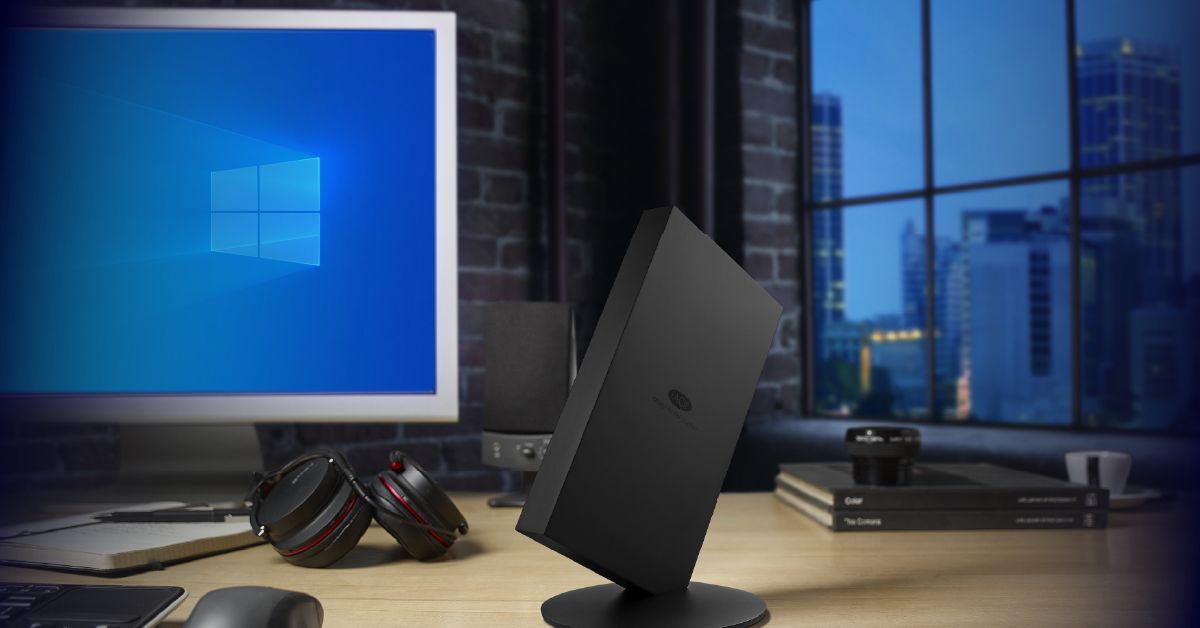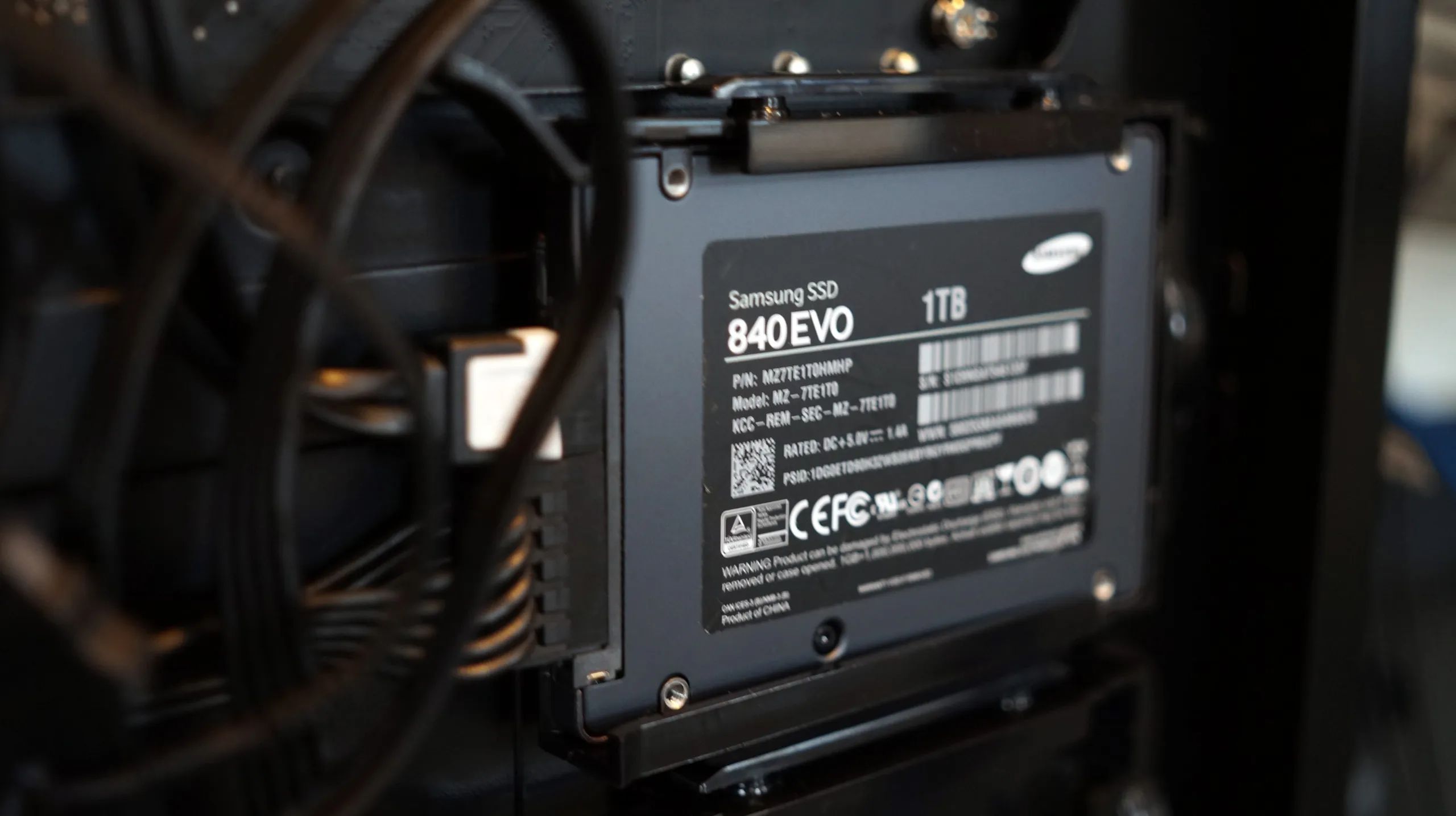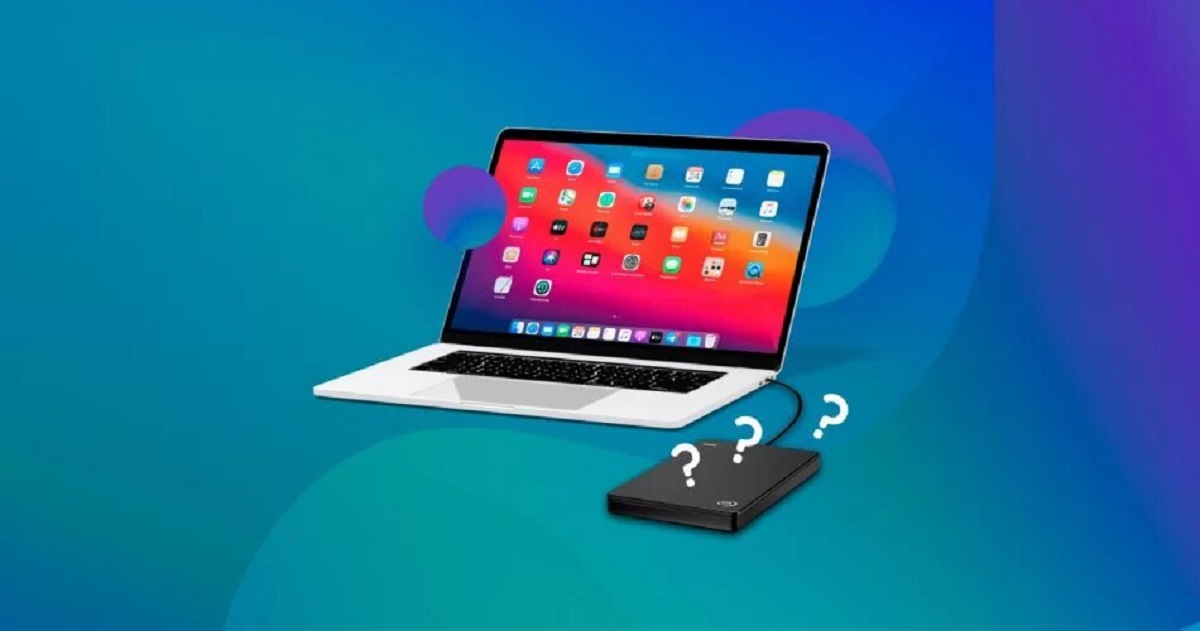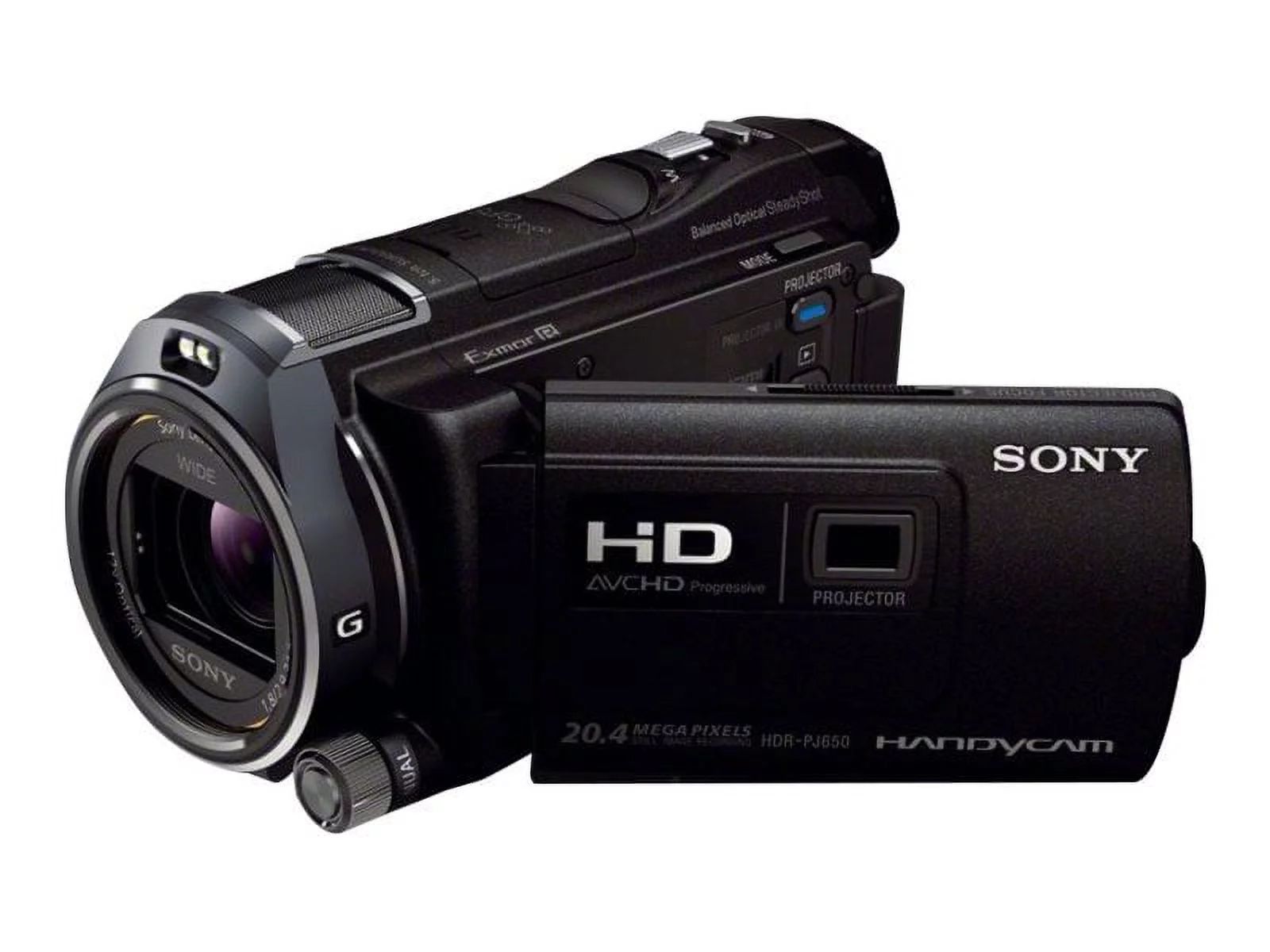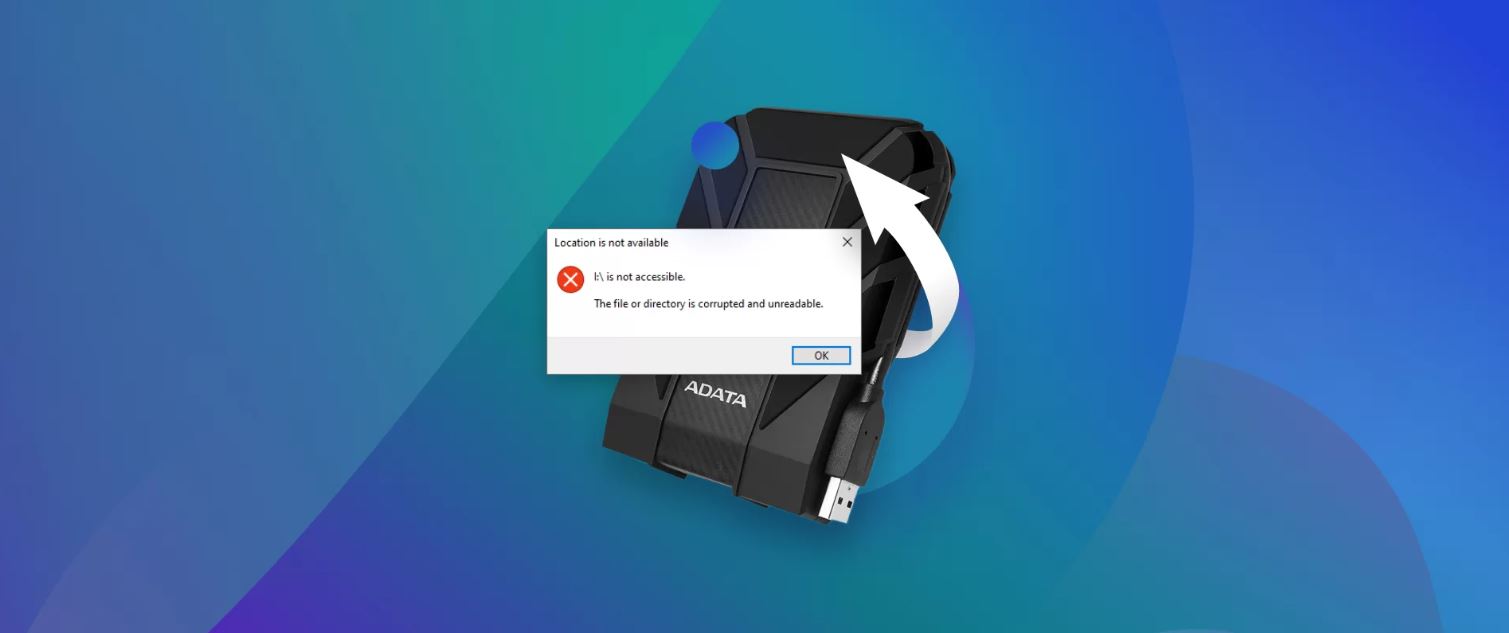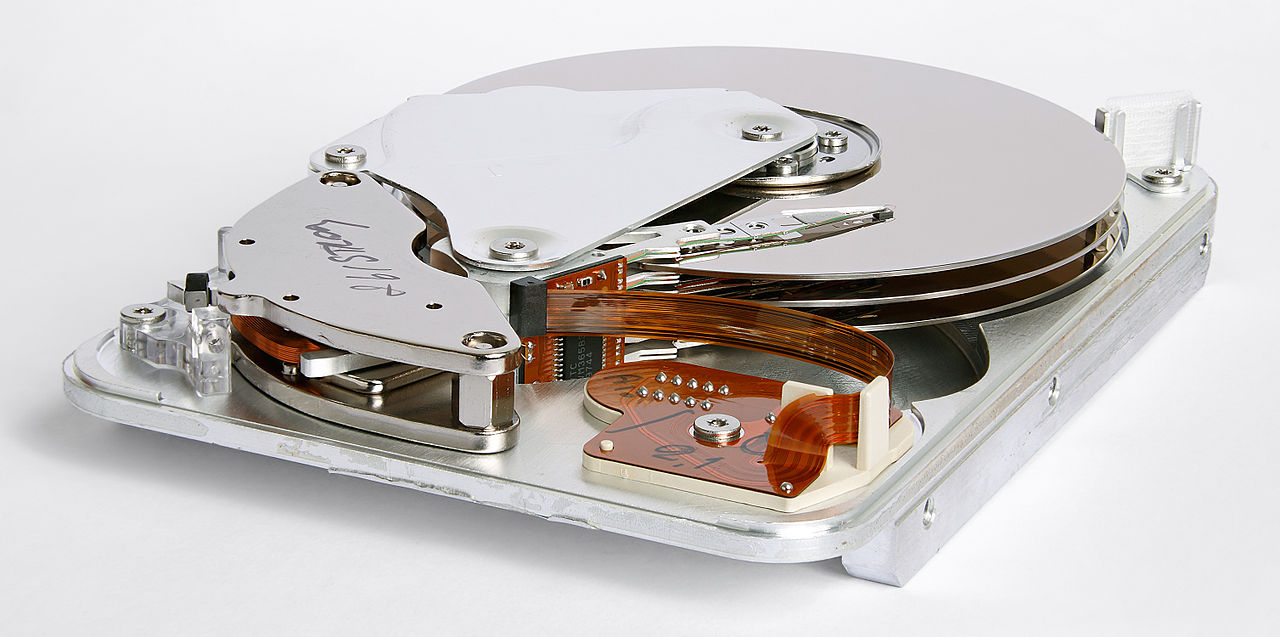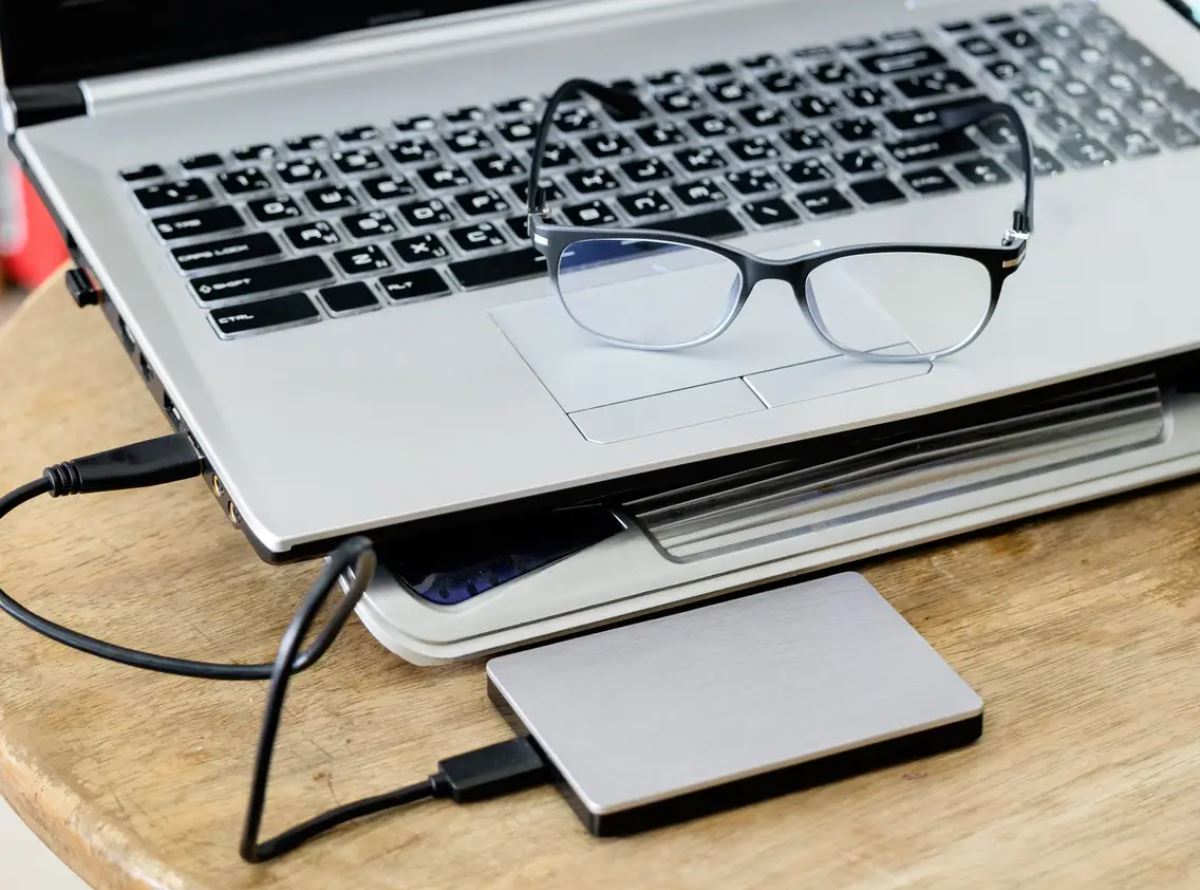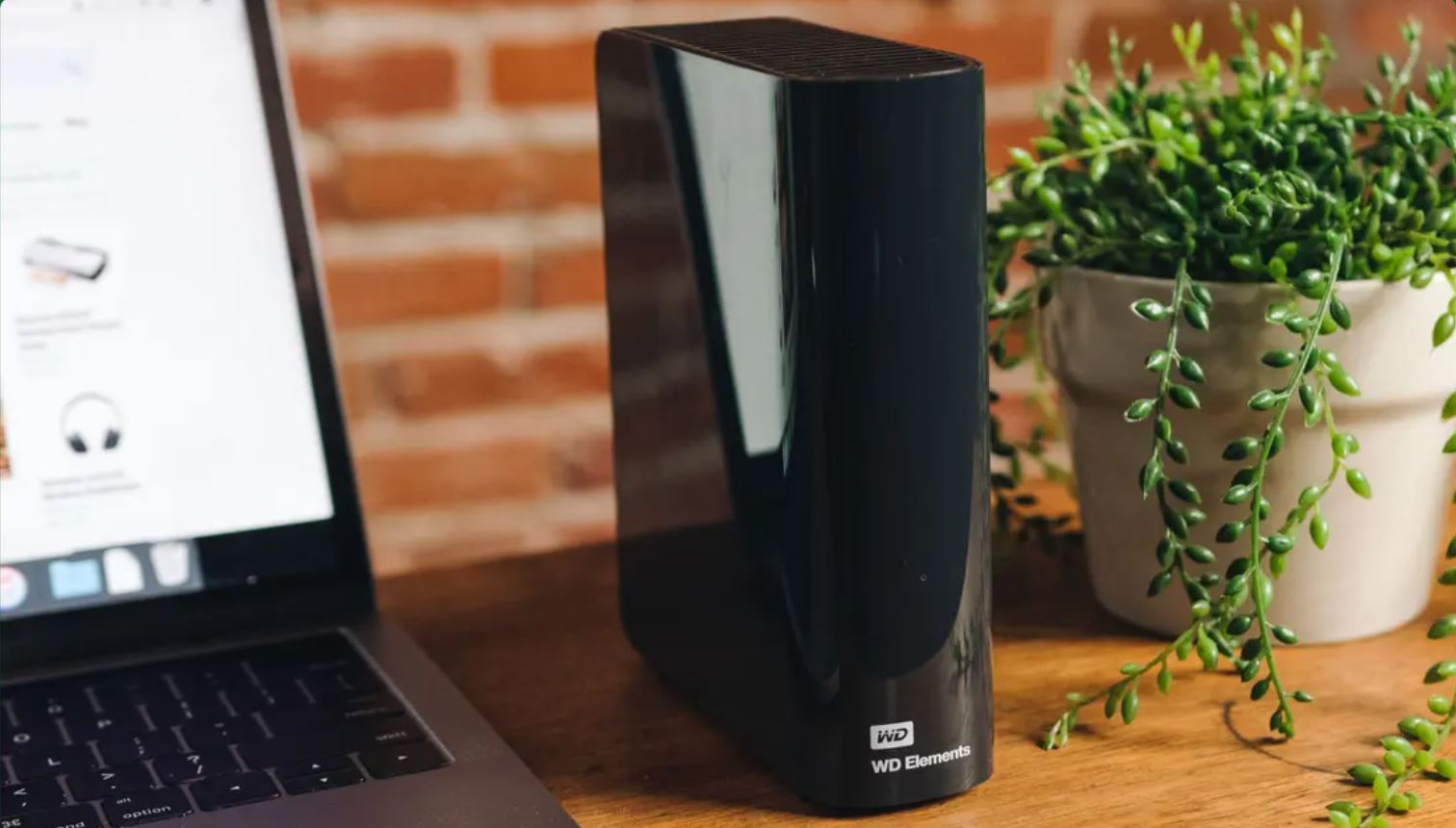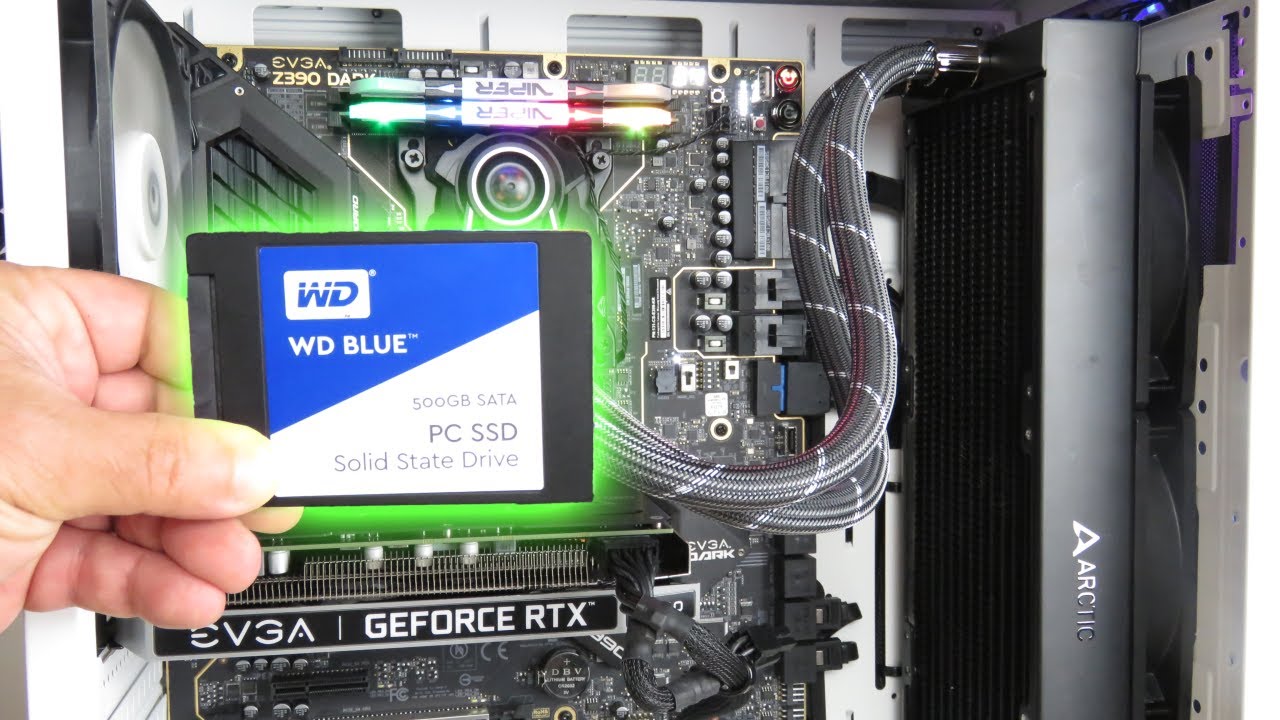Common Reasons for PC Not Recognizing a Hard Disk Drive
A hard disk drive is an essential component of a computer system, responsible for storing and retrieving digital data. However, there are instances when your PC may fail to recognize the presence of a hard disk drive, leaving you puzzled and frustrated. Understanding the common reasons behind this issue can help you troubleshoot and resolve it effectively.
1. Faulty or Loose Connection: One of the most common causes of a PC not recognizing a hard disk drive is a faulty or loose connection. Check the data and power cables connecting the hard drive to ensure they are properly plugged in and secure.
2. Incorrect BIOS Settings: Your computer’s Basic Input Output System (BIOS) contains settings that dictate the behavior of various hardware components, including the hard drive. If the BIOS settings are incorrect, the PC may fail to detect the hard disk drive.
3. Outdated or Incompatible Drivers: Drivers act as the interfaces between the hardware and the operating system. Outdated or incompatible drivers can prevent the PC from recognizing the hard disk drive.
4. Disk Management Issues: Issues with the Disk Management utility in your operating system can also cause the PC to not recognize the hard disk drive. This utility is responsible for initializing, partitioning, and formatting the drives on your computer.
5. Physical Damage to the Hard Drive: Physical damage to the hard drive, such as a broken connector or internal components, can render it unreadable by the PC. This can happen due to mishandling, falls, or other accidents.
6. Virus or Malware Infection: A severe virus or malware infection can corrupt the system files necessary for the PC to detect the hard disk drive. Malicious software can also interfere with the proper functioning of the disk management system.
7. Power Supply Problems: Insufficient or unstable power supply can cause the hard disk drive to malfunction or go undetected by the PC. This can happen due to a faulty power cable, power supply unit, or power fluctuations.
8. Operating System Corruption: Corruption within the operating system files can prevent the PC from recognizing the hard disk drive. This can occur due to improper shutdowns, system crashes, or software conflicts.
9. Insufficient Power or Power Saving Mode: Some power-saving settings on the computer may cause the hard disk drive to enter a low-power state. In this state, the PC may not recognize the drive until it receives enough power or wakes up from the power-saving mode.
10. Failed or Failing Hard Drive: Finally, the hard disk drive itself may have failed or be in the early stages of failure. In such cases, the PC may fail to recognize the drive or display error messages indicating disk failure.
Understanding these common reasons for a PC not recognizing a hard disk drive can help you identify the root cause of the issue. In the next section, we will explore steps to troubleshoot and fix these problems.
Faulty or Loose Connection
A faulty or loose connection is one of the most common reasons why a PC may not recognize a hard disk drive. This can happen if the data or power cables connecting the hard drive to the motherboard or power supply are not properly plugged in or if they have become loose over time.
To fix this issue, start by turning off your computer and unplugging it from the power source. Open the computer case and locate the cables connecting the hard drive. Ensure that both the data cable (usually a SATA or IDE cable) and the power cable are securely attached to the hard drive and the corresponding ports on the motherboard and power supply.
It’s also a good idea to check the condition of the cables themselves. Look for any visible signs of damage such as frayed wires or bent pins. If you spot any issues, consider replacing the cables with new ones.
Once you have double-checked the connection and ensured that everything is securely in place, close the computer case and plug it back into the power source. Turn on your PC and see if your hard drive is now recognized.
If the issue persists, you can try connecting the hard drive to a different SATA or IDE port on the motherboard. This can help determine if the problem lies with a specific port or with the hard drive itself.
In some cases, the connection issue may not be visible or easily fixable. If you have recently installed new hardware or made changes to your computer’s configuration, consider reverting those changes to see if it resolves the problem. It’s also worth checking the manufacturer’s documentation or contacting their support for specific troubleshooting steps related to your computer model or hard drive.
In summary, a faulty or loose connection between the hard drive and the motherboard or power supply can cause a PC to not recognize the hard disk drive. By ensuring secure and proper connections, you can resolve this issue and allow your computer to detect and use the hard drive correctly.
Incorrect BIOS Settings
Incorrect BIOS settings can often lead to a PC not recognizing a hard disk drive. The BIOS (Basic Input Output System) is responsible for managing the hardware components of your computer, including the hard drive. If the BIOS settings related to the hard drive are misconfigured or incompatible, it can result in the drive not being recognized by the system.
To resolve this issue, you will need to access the BIOS settings of your computer. Restart your PC and look for the key prompt displayed on the screen to enter the BIOS setup. The key may vary depending on your computer’s manufacturer, but commonly used keys include F2, F10, or Delete.
Once you’re in the BIOS setup, navigate to the “Storage” or “Advanced” section, where you will find options related to hard disk drives. Ensure that the hard drive is enabled and set as the primary boot device if you intend to use it as your operating system drive.
Additionally, check the SATA mode configuration in the BIOS. If your hard drive is connected via a SATA interface, make sure the SATA mode is properly set. It should match the mode of your hard drive (AHCI, IDE, or RAID). Select the appropriate option and save the changes before exiting the BIOS setup.
After saving the BIOS settings, the computer will restart. Check if the hard drive is now recognized by the PC. If not, you may need to delve deeper into the BIOS settings or consult the manufacturer’s documentation or support for further assistance.
It’s important to note that modifying the BIOS settings should be done with caution as any incorrect changes may cause system instability or other issues. If you are unsure about making changes in the BIOS, it’s recommended to seek guidance from a knowledgeable technician or the computer manufacturer’s support team.
In summary, incorrect BIOS settings can prevent a PC from recognizing a hard disk drive. By accessing the BIOS setup, ensuring the hard drive is enabled and properly configured, you can resolve this issue and allow your computer to detect the hard drive correctly.
Outdated or Incompatible Drivers
Outdated or incompatible drivers can be another reason why a PC fails to recognize a hard disk drive. Drivers act as bridges between the hardware components and the operating system, allowing them to communicate effectively. If the drivers for the hard disk drive are outdated or incompatible, the PC may not be able to recognize the drive.
To address this issue, you can start by checking for driver updates. Visit the website of your computer’s manufacturer or the hard drive manufacturer and navigate to the support or downloads section. Look for the latest drivers specifically for your hard disk drive model and download them. Install the drivers and restart your PC to see if the hard drive is now recognized.
If updating the drivers does not resolve the issue, it may be necessary to reinstall the drivers completely. To do this, you will need to uninstall the existing drivers first. Open the Device Manager by right-clicking on the Start menu and selecting “Device Manager.” Expand the “Disk drives” category, right-click on the hard disk drive, and select “Uninstall device.” Follow the on-screen prompts to complete the uninstallation process.
Once the drivers are uninstalled, restart your PC. Upon restart, the system will automatically attempt to reinstall the drivers. If it fails to do so, you can manually install the drivers by following the same steps mentioned earlier and selecting “Update driver” instead of “Uninstall device.” Choose the option to manually browse for the drivers you downloaded and install them.
If the above steps do not resolve the issue, it’s possible that the drivers are not the root cause. In such cases, it may be worth consulting the manufacturer’s support or seeking assistance from a professional technician who can diagnose and fix the problem accurately.
In summary, outdated or incompatible drivers can prevent a PC from recognizing a hard disk drive. By updating or reinstalling the drivers specifically designed for your hard disk drive model, you can resolve this issue and ensure that the drive is recognized by your computer.
Disk Management Issues
Issues with the Disk Management utility in your operating system can also cause a PC to fail in recognizing a hard disk drive. Disk Management is responsible for initializing, partitioning, and formatting drives on your computer. If there are problems within this utility, it can prevent the proper detection of your hard disk drive.
To troubleshoot disk management issues, first, access the Disk Management utility on your PC. In Windows, you can do this by right-clicking on the Start menu, selecting “Disk Management” from the context menu. Alternatively, you can press the Windows key + R, type “diskmgmt.msc”, and press Enter.
Once you are in the Disk Management window, check if your hard disk drive is listed. If it appears as unallocated space or has no drive letter assigned, it may require manual intervention to be recognized by your PC. Right-click on the drive and select “New Simple Volume” to begin the process of initializing and formatting the drive.
Follow the on-screen prompts to set up a new partition, allocate the desired drive letter, and format the drive with your preferred file system (such as NTFS or exFAT). After completing these steps, your PC should detect and recognize the hard disk drive.
If the Disk Management utility fails to recognize the hard disk drive or encounters errors during the process, there may be underlying issues with the drive itself. In such cases, it’s advisable to try connecting the drive to another computer or consult a professional technician for further assistance and data recovery options.
In some instances, the Disk Management utility may display the hard disk drive as “Offline.” To rectify this, right-click on the drive and select “Online” to make it accessible by the system. This can happen if the drive was previously disconnected or if there was a temporary glitch in the system.
In summary, issues with the Disk Management utility can cause a PC to not recognize a hard disk drive. By accessing the Disk Management tool, initializing and formatting the drive, and troubleshooting any encountered errors, you can resolve this issue and ensure that your hard disk drive is properly recognized by your PC.
Physical Damage to the Hard Drive
Physical damage to the hard drive can be a significant factor in a PC’s failure to recognize it. Dropping the hard drive, mishandling, or accidents can cause damage to the internal components, connectors, or other crucial parts of the drive, making it unreadable by the computer.
If you suspect physical damage to the hard drive, the first thing to do is examine the drive for any visible signs of damage. Look for dents, scratches, or bent connectors. If you find any, it’s likely that the damage is preventing the proper connection between the hard drive and the PC, leading to the recognition issue.
In such cases, trying to fix the physical damage on your own is not recommended, as it may lead to further damage or permanent data loss. It is advisable to consult a professional data recovery service or a knowledgeable technician. They have the expertise and specialized tools to assess the severity of the damage and perform necessary repairs or data recovery procedures.
Keep in mind that physical damage can range from minor issues that can be resolved with simple repairs to major damage that requires complete drive replacement. The extent of the damage and the possibility of data recovery will depend on the specific situation.
Prevention is always better than dealing with physical damage after it occurs. To protect your hard drive from physical damage, handle it with care. Avoid dropping it, exposing it to extreme temperatures, or subjecting it to unnecessary shocks or vibrations. Additionally, make sure your computer is placed in a stable and secure location to minimize physical stress on the hard drive.
In summary, physical damage to a hard drive can result in a PC not recognizing it. If you suspect physical damage, it is essential to seek professional assistance to prevent further damage and potentially recover your data. Taking precautions to handle and protect your hard drive can help minimize the risk of physical damage in the future.
Virus or Malware Infection
A virus or malware infection can also contribute to a PC’s failure to recognize a hard disk drive. Severe infections can corrupt system files, including those responsible for detecting and managing hardware components such as the hard drive. As a result, the system may not be able to recognize or access the hard drive.
To resolve this issue, it is crucial to conduct a thorough scan for viruses and malware using reliable antivirus software. Ensure that your antivirus program is up to date with the latest virus definitions to effectively identify and remove any malicious programs that may be causing the issue.
Start by launching your antivirus software and initiating a full system scan. Allow the scan to complete, and review the scan results for any detected threats. If the antivirus software identifies any viruses or malware, follow the recommended actions to quarantine or remove them.
If your existing antivirus software does not detect any threats or the issue persists even after removing the detected threats, it may be necessary to try a different antivirus program or consult with a professional technician who specializes in malware removal.
As a precautionary measure, it is essential to maintain good browsing habits and keep your operating system, antivirus software, and other software up to date with the latest security patches. This can help mitigate the risk of future virus or malware infections that could potentially impact the recognition of your hard disk drive.
In summary, a virus or malware infection can disrupt the normal functioning of the system, leading to a PC’s failure to recognize a hard disk drive. By conducting thorough antivirus scans, removing any detected threats, and practicing good cybersecurity habits, you can resolve this issue and ensure that your hard disk drive is properly recognized by your PC.
Power Supply Problems
Issues with the power supply can also contribute to a PC’s failure to detect a hard disk drive. Inadequate or unstable power supply can prevent the hard drive from functioning properly or being recognized by the system.
Start by checking the power cables connected to the hard drive. Ensure they are securely plugged into both the hard drive and the power supply unit. If the cables are loose or damaged, replace them with new ones.
It’s also important to verify the power supply’s capacity. If the power supply does not provide enough power to support all the components in your system, the hard drive may not receive sufficient power to function. Consider upgrading to a power supply with a higher wattage rating to ensure ample power supply to all components.
In addition, power fluctuations or voltage surges can disrupt the normal operation of the hard drive. To protect against this, consider using a surge protector or an uninterruptible power supply (UPS) to regulate the electricity and provide consistent power to all components.
If you suspect power supply problems and have access to a spare power supply, you can try replacing the existing power supply with the spare one to test if the issue is indeed related to power supply failure. If the hard drive is recognized with the new power supply, it indicates that the previous power supply was faulty and needs to be replaced.
It’s worth noting that power supply problems can also be indicative of other hardware issues or failures. If you have ruled out power supply problems and the hard drive is still not being detected, it may be necessary to seek assistance from a professional technician to diagnose and fix the underlying hardware problem.
In summary, inadequate or unstable power supply can prevent a PC from recognizing a hard disk drive. By checking and securing power cables, upgrading the power supply if necessary, using surge protectors or UPS devices, you can resolve power supply-related issues and ensure the proper detection and functionality of your hard disk drive.
Operating System Corruption
Operating system corruption can be a significant factor causing a PC to fail in recognizing a hard disk drive. Corruption in the system files responsible for detecting and managing hardware components, such as the hard drive, can prevent the PC from recognizing or accessing the drive properly.
To address this issue, you can start by running the built-in System File Checker (SFC) tool in Windows. Open the Command Prompt as an administrator and type “sfc /scannow” followed by Enter. This will initiate a scan to check for any corrupt system files and attempt to repair them automatically.
If the SFC scan does not resolve the issue, you may need to consider performing a system restore to a previous point when the PC recognized the hard disk drive correctly. This can be done through the System Restore feature in Windows, accessing it from the Control Panel or by using the Windows search function to find “System Restore.”
In some cases, more severe operating system corruption may require a complete reinstallation of the operating system. Before proceeding with this step, make sure to back up important data as reinstalling the operating system can result in data loss.
If you have exhausted these options and the hard disk drive is still not recognized, it may be necessary to seek assistance from a professional technician or the support team of your operating system. They can provide specific troubleshooting steps or guide you through advanced repair processes to resolve the operating system corruption issue.
It’s worth noting that operating system corruption can occur due to various reasons, such as improper shutdowns, system crashes, or software conflicts. It is essential to practice proper computer maintenance, including regular updates, avoiding sudden power losses, and using reputable software to help mitigate the risk of operating system corruption.
In summary, operating system corruption can interfere with a PC’s ability to recognize a hard disk drive. By utilizing tools like the System File Checker, performing a system restore, or reinstalling the operating system, you can address operating system corruption and ensure proper recognition of the hard disk drive by your PC.
Insufficient Power or Power Saving Mode
Insufficient power supply or power-saving settings can lead to a PC not recognizing a hard disk drive. In some cases, power-saving configurations can cause storage devices to enter low-power modes, resulting in the drive not being detected until it receives sufficient power or wakes up from the power-saving mode.
To address this issue, you can start by checking the power settings on your computer. Open the Control Panel or the computer’s settings and navigate to the Power Options section. Look for any settings related to power-saving modes or hard disk drive power management.
Ensure that the power-saving mode is not set to an extreme setting that may excessively reduce power supply to the hard disk drive. Adjust the settings to a balanced or performance mode to ensure that the hard drive receives adequate power to function properly.
Additionally, you can check the advanced power settings and fine-tune the power-saving options for the hard disk drive. Look for options like “Turn off hard disk after” or “Put hard disk to sleep” and set them to longer time intervals or disable them altogether. This will prevent the hard disk drive from entering low-power states frequently.
If you are using a laptop, it’s important to review the power settings both when the device is on battery power and when it is connected to a power source. Sometimes, certain power-saving features are more aggressive when running on battery, which may impact the recognition of the hard disk drive.
If adjusting the power settings does not resolve the issue, it may be necessary to consider other hardware-related factors, such as a faulty power supply unit, or seek assistance from a professional technician to diagnose the underlying problem.
In summary, insufficient power supply or power-saving settings can contribute to a PC not recognizing a hard disk drive. By adjusting the power settings and ensuring that the hard disk drive is not excessively put into low-power modes, you can resolve this issue and allow your computer to properly detect and utilize the hard disk drive.
Failed or Failing Hard Drive
A failed or failing hard drive can be the root cause of a PC’s inability to recognize it. Over time, hard drives can develop mechanical issues, bad sectors, or other failures that prevent them from functioning correctly. When a hard drive fails, it may no longer be detected by the computer.
If you suspect a failed or failing hard drive, there are a few steps you can take to diagnose and address the issue. First, check if the hard drive is making any unusual noises, such as clicking or grinding sounds. These noises can be indicative of a mechanical failure and may require professional intervention.
Next, try connecting the hard drive to a different computer or using a different data cable to rule out any issues with the current setup. If the hard drive is still not recognized, you can try accessing the drive in the BIOS or using disk management tools to see if any errors or warnings are displayed.
If you are unable to access the hard drive or encounter errors suggesting a failure, it is essential to back up your data as soon as possible. Use data recovery software or consult with a professional data recovery service if necessary.
In some cases, you may be able to restore functionality to a failing hard drive temporarily by using diagnostic or repair tools provided by the hard drive manufacturer. However, these should be considered temporary solutions, and it is strongly recommended to replace the failing hard drive to prevent data loss and further complications.
When replacing a failed or failing hard drive, consider upgrading to a more reliable solid-state drive (SSD) if feasible. SSDs have no moving parts, making them more resistant to physical wear and tear. Moreover, they offer increased performance and improved longevity compared to traditional hard disk drives (HDDs).
In summary, if a hard drive has failed or is failing, it may not be recognized by a PC. By diagnosing the issue through noise, troubleshooting, and utilizing data recovery options early on, you can minimize data loss and take appropriate measures, such as replacing the hard drive, to address the problem effectively.
How to Troubleshoot and Fix the Issue
Encountering a PC that does not recognize a hard disk drive can be frustrating, but by following some troubleshooting steps, you can often resolve the issue. Here are some steps to help you troubleshoot and fix the problem:
1. Check the Connection Cables: Ensure that the data and power cables connecting the hard drive are securely plugged in and not loose or damaged.
2. Verify BIOS Settings: Access the BIOS settings and ensure that the hard drive is enabled and properly configured, including the correct SATA mode.
3. Update or Reinstall Drivers: Check for driver updates for your hard drive and install them. If the issue persists, try uninstalling and reinstalling the drivers.
4. Utilize Disk Management: Access the Disk Management utility and check if the hard drive is listed. Initialize, partition, and format the drive if necessary.
5. Perform a Hardware Diagnostic Test: Run hardware diagnostic tools provided by the hard drive manufacturer to check for any issues or errors with the drive.
6. Scan for Viruses and Malware: Run a thorough antivirus and malware scan to detect and remove any malicious software that may be interfering with the detection of the hard drive.
7. Check Power Supply and Configuration: Ensure that the hard drive is receiving adequate power and that the power supply is functioning correctly. Consider upgrading to a higher-capacity power supply if necessary.
8. Repair or Reinstall the Operating System: If operating system corruption is suspected, try using the System File Checker (SFC) tool or perform a system restore or reinstallation if needed.
9. Adjust Power Settings: Check the power-saving settings on your computer and make sure they are not excessively putting the hard drive into low-power states.
10. Backup, Replace, or Repair the Hard Drive: If all else fails, consider backing up your data and replacing the hard drive. Professional data recovery services or repair technicians may be necessary if data recovery is required.
It’s important to note that these troubleshooting steps require caution and, in some cases, technical knowledge. If you are unsure or uncomfortable performing these steps on your own, it’s advisable to seek assistance from a professional technician
By following these troubleshooting steps, you can identify and resolve the issue preventing your PC from recognizing the hard disk drive, allowing you to restore functionality and access your data.
Check the Connection Cables
One of the primary steps to troubleshoot a PC not recognizing a hard disk drive is to check the connection cables. Faulty or loose cables can often cause connectivity issues, preventing the computer from detecting the hard drive properly.
Start by turning off your computer and unplugging it from the power source. Open the computer case and locate the cables that connect the hard drive to the motherboard and power supply. There are usually two types of cables involved: the data cable and the power cable.
The data cable, usually a SATA or IDE cable, carries the data signals between the hard drive and the motherboard. Ensure that the data cable is securely attached to both the hard drive and the motherboard. Gently wiggle the cable to check if it has become loose. If it is loose, carefully reseat it to establish a secure connection.
The power cable provides electrical power to the hard drive. Make sure the power cable is firmly plugged into the hard drive and the power supply unit. If the power cable has detachable connectors, verify that they are tightly secured.
While examining the cables, check for any signs of damage, such as frayed wires or bent pins. If you notice any damage, it is recommended to replace the cables with new ones to ensure proper connectivity.
After ensuring that all connections are secure and cables are in good condition, close the computer case and plug it back into the power source. Turn on your PC and observe if the hard drive is now recognized by the system.
In some cases, a faulty cable may still cause issues even if it appears to be in good condition. If you have access to a spare cable, try replacing the data or power cable to see if it resolves the issue. This can help identify if the problem lies with a specific cable.
Checking the connection cables is a fundamental and easy step to address the PC’s failure to recognize the hard disk drive. By ensuring secure and proper connections, you can eliminate any potential issues caused by loose or faulty cables.
Verify BIOS Settings
When experiencing a PC that fails to recognize a hard disk drive, checking and verifying the BIOS settings is a crucial step in troubleshooting the issue. The BIOS (Basic Input Output System) is responsible for managing the hardware components of your computer, including the hard drive. Incorrect or incompatible BIOS settings can cause the system to be unable to detect and properly utilize the hard disk drive.
To verify the BIOS settings, start by restarting your computer. As the computer starts up, look for a key prompt displayed on the screen indicating how to access the BIOS setup. The specific key to enter the BIOS varies, but commonly used keys include F2, F10, or Delete.
Once you are in the BIOS setup, navigate to the section related to storage devices or SATA configuration, as this is where the hard drive settings are usually located. Ensure that the hard drive is enabled and listed as one of the recognized storage devices.
Another crucial setting to check is the SATA mode. Depending on the hard drive and motherboard compatibility, the SATA mode can be set to AHCI (Advanced Host Controller Interface), IDE (Integrated Drive Electronics), or RAID (Redundant Array of Independent Disks). Verify that the SATA mode is correctly set to match the type of hard drive you have installed.
If you are unsure about the appropriate SATA mode for your hard drive, consult the documentation provided with the motherboard or check the manufacturer’s website for the recommended settings.
After verifying the SATA mode, make sure to save any changes you have made in the BIOS before exiting. Once you exit the BIOS setup, your computer will restart, and you can check if the system now recognizes the hard disk drive.
If verifying the BIOS settings does not resolve the issue, it is important to consider other possible causes and continue with further troubleshooting steps. In some cases, there may be deeper hardware or software issues that need to be addressed.
It’s worth noting that making changes in the BIOS settings should be done with caution, as incorrect changes can lead to system instability or other problems. If you are unsure about specific BIOS settings or uncomfortable making changes on your own, it is advisable to consult the documentation provided by the motherboard manufacturer or seek assistance from a professional technician.
In summary, verifying the BIOS settings is an essential step in resolving a PC’s failure to recognize a hard disk drive. By ensuring that the hard drive is enabled and the SATA mode is correctly configured, you can ensure proper detection and utilization of the hard disk drive by your system.
Update or Reinstall Drivers
Outdated or incompatible drivers can often be the cause of a PC not recognizing a hard disk drive. Drivers act as the interfaces between the hardware components and the operating system, facilitating communication. If the drivers for the hard disk drive are outdated, missing, or incompatible, the PC may fail to detect the drive correctly.
To address this issue, it is recommended to update or reinstall the drivers for the hard disk drive. Start by identifying the make and model of your hard drive. This information can typically be found on the physical drive itself or in the manufacturer’s documentation. Alternatively, you can use device manager or a third-party system information tool to gather this information.
Once you have the necessary information, visit the manufacturer’s website to check for driver updates specifically for your hard disk drive model. Look for the most recent drivers available and download them to your computer.
To update the drivers, open the device manager by right-clicking on the Start menu and selecting “Device Manager.” Expand the “Disk drives” category, right-click on your hard disk drive, and select “Update driver.” Choose the option to browse your computer for driver software and then locate and select the downloaded driver files to begin the installation process.
If updating the drivers does not resolve the issue, you may need to consider reinstalling the drivers completely. In the device manager, right-click on your hard disk drive and select “Uninstall device.” Once the device is uninstalled, restart your PC. Upon restart, the system will automatically attempt to reinstall the drivers for the hard disk drive. Follow the prompts to complete the driver installation process.
In some cases, you may need to install additional drivers or utility software provided by the hard drive manufacturer to ensure proper compatibility and functionality. These additional drivers or utilities can often be found on the manufacturer’s website alongside the regular driver downloads.
If the issue persists even after updating or reinstalling the drivers, it is advisable to explore other troubleshooting options or seek professional assistance. A technician may be able to provide additional guidance or perform more advanced troubleshooting steps.
In summary, updating or reinstalling the drivers for the hard disk drive can often resolve a PC’s failure to recognize the drive. By ensuring that the drivers are up to date and properly installed, you can maximize compatibility and improve the system’s ability to detect and utilize the hard disk drive.
Utilize Disk Management
Disk Management is a built-in utility in Windows that allows you to manage and configure storage devices, including hard disk drives. If your PC is not recognizing a hard disk drive, utilizing Disk Management can help troubleshoot and resolve the issue.
To access Disk Management, right-click on the Start menu and select “Disk Management” from the context menu. Alternatively, you can press the Windows key + R, type “diskmgmt.msc,” and press Enter.
Once in Disk Management, you will see a list of all the storage devices connected to your computer. First, check if your hard disk drive is listed. It should be labeled as “Disk X,” with details such as its capacity and status displayed.
If the hard disk drive appears but is listed as “Unknown” or unallocated space, it means that the drive has not been initialized or formatted. Right-click on the drive and select “Initialize Disk.” Choose the appropriate disk initialization option (usually MBR or GPT) and follow the prompts to complete the process.
After initializing the disk, you will need to create a partition. Right-click on the unallocated space and select “New Simple Volume.” Follow the on-screen instructions to assign a drive letter, specify the volume size, and format the partition with a desired file system (such as NTFS or exFAT).
If the hard disk drive is already initialized and formatted but does not have a drive letter assigned, right-click on the partition and select “Change Drive Letter and Paths.” Click “Add,” choose a drive letter, and click “OK” to assign the letter.
If the hard disk drive is listed as a different status, such as “Offline,” right-click on the drive and select “Online.” This will enable the drive and make it accessible to the system.
If Disk Management still fails to recognize the hard disk drive or encounters errors during the process, it may suggest a deeper issue with the drive itself. In such cases, professional assistance may be necessary for further diagnosis, repair, or data recovery options.
Remember to exercise caution when using Disk Management, as improper changes or formatting can result in data loss. It is recommended to back up any important data before performing any disk management operations.
In summary, utilizing Disk Management can help resolve issues with a PC not recognizing a hard disk drive. By initializing, partitioning, assigning drive letters, and formatting the drive correctly, you can ensure proper recognition and utilization of the hard disk drive within your computer system.
Perform a Hardware Diagnostic Test
Performing a hardware diagnostic test is a crucial step in troubleshooting a PC that fails to recognize a hard disk drive. This test helps determine if there are any underlying hardware issues with the drive itself that are causing the detection problem.
Many hard drive manufacturers provide diagnostic tools specifically designed to test their drives. These tools can be downloaded from the manufacturer’s website and run on your computer. Some common diagnostic tools include Western Digital Data Lifeguard Diagnostics, Seagate SeaTools, and Toshiba PC Diagnostic Tool.
Once you have downloaded the diagnostic tool, install it and follow the instructions provided by the manufacturer to run the test on your hard disk drive. The diagnostic tool will scan the drive for errors, bad sectors, and other issues that may be affecting its functionality.
If the diagnostic tool detects any errors or issues, it may provide recommendations on how to resolve them. In some cases, it may be possible to repair certain issues directly from the diagnostic tool.
If the diagnostic tool cannot repair the drive or if it indicates a more serious hardware problem, it is advisable to consult a professional technician or the manufacturer’s support for further assistance. They can provide additional guidance on how to proceed, including options for repair, replacement, or data recovery.
Performing a hardware diagnostic test is particularly important if the hard disk drive exhibits symptoms such as unusual noises, frequent crashes, or slow performance, in addition to the PC not recognizing it. These could be signs of a failing or faulty hard drive.
Keep in mind that running a diagnostic test may take some time, depending on the size and condition of the drive. It is recommended to perform this test when you have sufficient time available, and your PC can be left undisturbed during the process.
In summary, performing a hardware diagnostic test can help identify underlying issues with a hard disk drive that prevent a PC from recognizing it. By using the manufacturer’s diagnostic tool and following their instructions, you can pinpoint any hardware problems and determine the appropriate steps to resolve the issue.
Scan for Viruses and Malware
A PC’s failure to recognize a hard disk drive can sometimes be attributed to a virus or malware infection. These malicious programs can corrupt system files necessary for the proper detection and functioning of the hard drive, leading to recognition issues.
To address this issue, it is crucial to perform a thorough scan for viruses and malware using reliable antivirus software. Ensure that your antivirus program is updated with the latest virus definitions to effectively detect and remove any malicious programs that may be causing the problem.
Start by launching your antivirus software and initiating a full system scan. Allow the scan to complete, and carefully review the scan results for any detected threats. If any viruses or malware are identified, follow the recommended actions to quarantine or remove them from your system.
If your existing antivirus software does not detect any threats or if the issue persists even after removing the detected threats, it may be necessary to consider using a different antivirus program. Some malware may be specifically designed to evade detection or remove other antivirus software, so trying a different program may yield better results.
In addition to antivirus scans, it is also recommended to use reputable anti-malware software to perform supplementary scans. Anti-malware tools often target specific types of malicious programs that may not be detected by regular antivirus software.
If the PC is heavily infected and unable to run antivirus scans properly, it may be necessary to boot into Safe Mode with Networking. This mode starts the computer with a limited set of drivers and services, allowing for a more effective scanning and removal process.
Keep in mind that some viruses or malware can damage or modify the system files required for the hard drive’s proper functioning. In such cases, it may be challenging to fully restore the system without professional assistance. If the scan does not resolve the issue or if you suspect significant damage, consider seeking help from a professional technician or specialist in malware removal.
Lastly, prevention is crucial in avoiding virus and malware infections. Ensure that your operating system, antivirus software, and other applications are updated regularly with the latest security patches. Practice safe browsing habits, be cautious of suspicious emails and downloads, and avoid visiting potentially harmful websites.
In summary, scanning for viruses and malware is an essential step in troubleshooting a PC that fails to recognize a hard disk drive. By using reputable antivirus and anti-malware software, performing thorough scans, and keeping your system updated, you can detect and remove malicious programs that may be interfering with the hard drive’s proper recognition and functioning.
Check Power Supply and Configuration
Checking the power supply and its configuration is crucial when troubleshooting a PC that fails to recognize a hard disk drive. Insufficient or unstable power supply can prevent the hard drive from functioning properly or being detected by the system.
Start by checking the power cables connected to the hard drive. Ensure that they are securely plugged into both the hard drive and the power supply unit. If the cables appear loose or damaged, replace them with new ones to guarantee a reliable connection.
Verify if the power supply unit has sufficient capacity to support all the components in your system, including the hard drive. Inadequate power supply can cause the hard drive to malfunction or go undetected. Consider upgrading to a power supply with a higher wattage rating if necessary.
In addition to sufficient power capacity, also check if the power supply unit is functioning correctly. Power supply issues can occur due to faulty components or power fluctuations. Test the power supply using a multimeter or substitute it with a known-working power supply to see if the hard drive is recognized.
Interruptions in power supply can also result from power-saving settings or configurations on your computer. Check the power options in your operating system’s control panel and ensure that the hard drive is not excessively put into low-power modes. Adjust the settings to a balanced or performance mode to ensure the hard drive receives adequate power.
If you are using a laptop, review power settings for both battery and plugged-in modes, as some power-saving features may differ depending on the power source. Adjust the settings accordingly to avoid overly aggressive power-saving actions that may impact the recognition of the hard disk drive.
Using a surge protector or an uninterruptible power supply (UPS) can mitigate power-related issues by regulating the flow of electricity and safeguarding against power surges or fluctuations. Consider using these devices to provide consistent and stable power to all components, including the hard drive.
If the PC still fails to recognize the hard disk drive after checking the power supply and configuration, it may indicate other underlying hardware or software issues. Consulting a professional technician or contacting the manufacturer’s support may be necessary for further assistance or diagnostics.
In summary, checking the power supply and its configuration is essential in resolving a PC’s failure to recognize a hard disk drive. By ensuring a stable power supply, adjusting power-saving settings, and using surge protectors or UPS devices, you can ensure sufficient power delivery to the hard drive, allowing it to be properly detected and utilized by the system.
Repair or Reinstall the Operating System
Operating system corruption can be a significant factor causing a PC to fail in recognizing a hard disk drive. Corruption in the system files responsible for detecting and managing hardware components, including the hard drive, can prevent the PC from recognizing or accessing the drive properly.
If you suspect operating system corruption, there are several steps you can take to repair or reinstall the operating system:
1. System File Checker (SFC): A built-in Windows tool, the System File Checker (SFC), scans and repairs corrupt or missing system files. Open the Command Prompt as an administrator and run the command “sfc /scannow” to initiate the scan. If any issues are detected, the SFC will attempt to repair them automatically.
2. System Restore: If you have a restore point created before the issue occurred, you can perform a system restore to revert your computer to a previous state when the hard drive was recognized. Access the System Restore feature through the Control Panel or by searching for “System Restore” in the search bar.
3. Reinstallation from the Recovery Partition: Many computers come with a hidden recovery partition that allows you to reinstall the operating system without the need for external media. Access the recovery partition during startup by following the instructions provided by the manufacturer. Be aware that this process will erase all data on the drive, so back up your important files beforehand.
4. Reinstallation from Installation Media: If you have a Windows installation disc or USB drive, you can perform a fresh installation of the operating system. Boot your computer from the installation media, follow the prompts, and choose the option to install Windows. Remember to back up your data before proceeding, as this process will result in the loss of all files on the hard drive.
5. Seek Professional Help: If the above steps do not resolve the issue or if you are uncomfortable performing them on your own, it is advisable to seek assistance from a professional technician or the support team of your operating system. They can provide further guidance on advanced repair or recovery options.
Remember to ensure that you have a backup of your data before proceeding with any operating system repair or reinstallation. In some cases, operating system corruption can be indicative of deeper hardware issues. If the PC still fails to recognize the hard disk drive after repairing or reinstalling the operating system, professional assistance may be necessary for further diagnostics or hardware repairs.
In summary, repairing or reinstalling the operating system can help resolve a PC’s failure to recognize a hard disk drive caused by operating system corruption. By using tools like the System File Checker, performing a system restore, or reinstalling the operating system, you can address corruption issues and ensure the proper detection and functionality of the hard disk drive.
Adjust Power Settings
Adjusting power settings is an essential step when troubleshooting a PC that fails to recognize a hard disk drive. Power settings, particularly those related to power-saving modes, can impact the behavior of the hard drive and its recognition by the system.
Start by accessing the power settings on your computer. In Windows, you can do this by going to the Control Panel and selecting “Power Options.” Alternatively, right-click on the battery icon in the system tray and select “Power Options.”
Within the power settings, look for options related to power-saving or sleep modes. These settings determine how the computer utilizes power and can affect the performance and functionality of the hard disk drive.
Adjust the power plan to a balanced or performance mode, rather than an aggressive power-saving mode. Aggressive power-saving settings may put the hard drive into low-power states, causing it to be unrecognized by the system.
Additionally, look for more detailed power settings that affect hard disks. Common options include “Turn off hard disk after” or “Put hard disk to sleep after.” Set these options to longer time intervals or disable them altogether to prevent the hard drive from frequently entering low-power states.
It is important to note that power settings can vary depending on the system and the version of the operating system. Some settings may not be available or visible depending on the configuration of your computer.
If you are using a laptop, consider adjusting power settings for different scenarios, such as when the device is running on battery power versus when it is connected to a power source. Some power-saving features may be more aggressive when running on battery and can impact the detection and performance of the hard disk drive.
Keep in mind that adjusting power settings can also impact the overall power consumption of the computer. While it is essential to ensure proper functioning of the hard disk drive, striking a balance between power savings and optimal performance is critical.
If adjusting power settings does not resolve the issue of the PC failing to recognize the hard drive, it is recommended to continue with further troubleshooting steps or seek assistance from a professional technician or the support team of your operating system.
In summary, adjusting power settings is a vital step in troubleshooting a PC’s failure to recognize a hard disk drive. By optimizing power-saving configurations and preventing the hard drive from frequently entering low-power states, you can ensure proper detection and utilization of the hard disk drive by the system.
Backup, Replace, or Repair the Hard Drive
If all else fails and the PC still does not recognize the hard disk drive, it may be necessary to consider backup, replacement, or repair options for the drive. This step helps mitigate potential data loss and address any underlying hardware issues.
1. Backup your data: Before proceeding with any actions that involve repairing or replacing the hard drive, it is crucial to back up your important data. Use an external storage device or cloud-based backup service to ensure that your files are safely preserved.
2. Professional Assessment: If you are unsure about the state or repairability of the hard drive, it is advisable to seek assistance from a professional data recovery service or a knowledgeable technician. They can assess the drive, diagnose any underlying hardware issues, and provide recommendations for repair or recovery.
3. Hard Drive Replacement: If the hard drive is deemed irreparable or unviable for repair, replacing it with a new one may be the best option. Ensure compatibility with your system and consider upgrading to a solid-state drive (SSD) for improved performance and reliability.
4. Repair Services: In some cases, specific hardware issues with the hard drive can be repaired by specialized technicians. This may involve component replacement, firmware updates, or other repair procedures. Consult with a professional technician or the manufacturer to explore available repair services.
5. Restore Data: Once you have either replaced or repaired the hard drive, restore your backed-up data onto the new drive or the repaired drive. Follow the appropriate procedures and ensure that your files are properly transferred and accessible.
It’s important to note that attempting DIY repairs on a hard drive, especially those involving opening the drive enclosure, can result in permanent data loss or further damage. It is advisable to seek professional help rather than engaging in risky repair attempts.
In instances where the hard drive failure is severe, and data recovery is a top priority, contact a professional data recovery service. They have specialized tools and knowledge to retrieve data from damaged or failed hard drives.
In summary, if all troubleshooting efforts have failed to resolve the PC’s failure to recognize the hard disk drive, it is essential to consider backup, replacement, or repair options. Backing up your data, seeking professional assessment, replacing the hard drive, or exploring repair services can help address the issue while minimizing data loss and ensuring the proper functioning of the storage system.
Conclusion
When a PC fails to recognize a hard disk drive, it can be a frustrating experience. However, by following the troubleshooting steps outlined in this article, you can effectively address the issue and regain functionality of your hard drive.
We explored common reasons behind a PC not recognizing a hard disk drive, including faulty or loose connections, incorrect BIOS settings, outdated or incompatible drivers, disk management issues, physical damage, virus or malware infections, power supply problems, operating system corruption, insufficient power or power-saving modes, and failed or failing hard drives.
Through the process of checking connection cables, verifying BIOS settings, updating or reinstalling drivers, utilizing Disk Management, performing hardware diagnostic tests, scanning for viruses and malware, checking power supply and configuration, repairing or reinstalling the operating system, adjusting power settings, and considering backup, replacement, or repair options for the hard drive, you can effectively troubleshoot and resolve the recognition issue.
Remember to exercise caution when making changes to your system, particularly within the BIOS settings or when reinstalling the operating system, as improper actions can lead to data loss or system instability. If you are unsure or uncomfortable performing these steps, seeking assistance from a professional technician or the support team of your operating system or computer manufacturer is advised.
Finally, prevention is key to avoiding future recognition issues with your hard disk drive. Regularly updating your operating system, drivers, and antivirus software, practicing safe browsing habits, and taking proper care of your hardware can help prevent common causes of failure and optimize the longevity and performance of your hard drive.
By addressing the specific reason behind the recognition issue and applying the appropriate troubleshooting steps, you can overcome the problem and ensure smooth operation of your hard disk drive, allowing you to access and utilize your data effectively.







